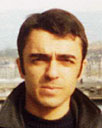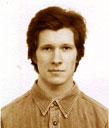Gia KHORIAULI
JINR, Dubna
gia@nusun.jinr.ru

At the current time my scientific work includes two tasks:
&Mac183;Taking a part in ATLAS project-Data Challenge (DC). Since the summer of 2002 year, I productively contribute to one of the phase of this project-DC1. The result of my work is about 5¥104 fully simulated pp->Di-jets events for ATLAS Experiment (G.Khoriauli et al, VII Conf. of Young Scientists, JINR, Dubna 2003, pp.307-310). The next steps that Iím planning to do are reconstruction and further physics analysis of the simulated events.
&Mac183;Iím making calculations of cross-sections and other parameters of the several High Energy physics processes within the new theoretical assumptions made in Laboratory of Theoretical Physics (JINR). These calculations deal with the possibilities of heavy quark-anti-quark bound states existence and their observation in modern experiment.
Also, Iím estimating cross-sections of Higgs bosons decays into different channels within the above theoretical model.




